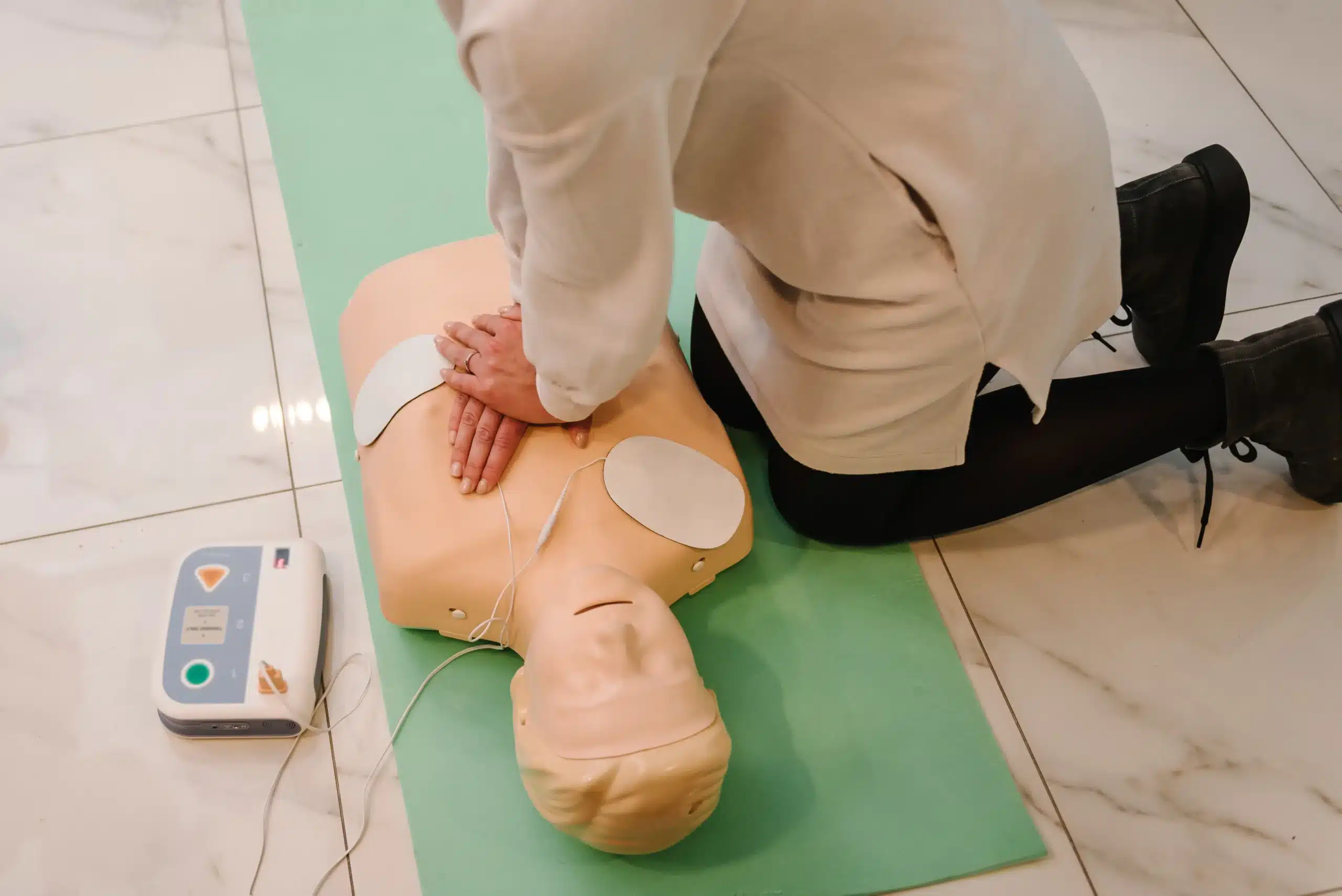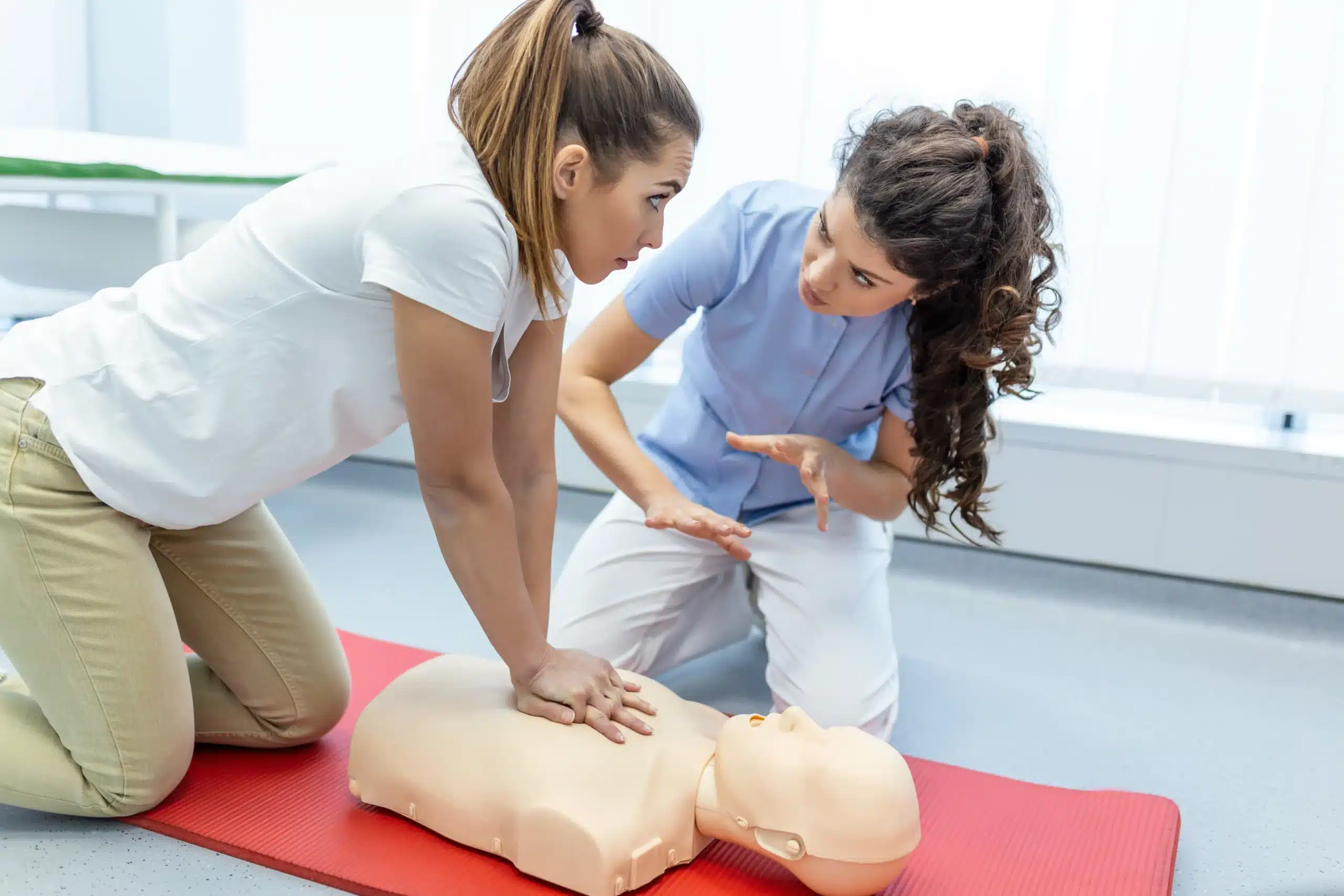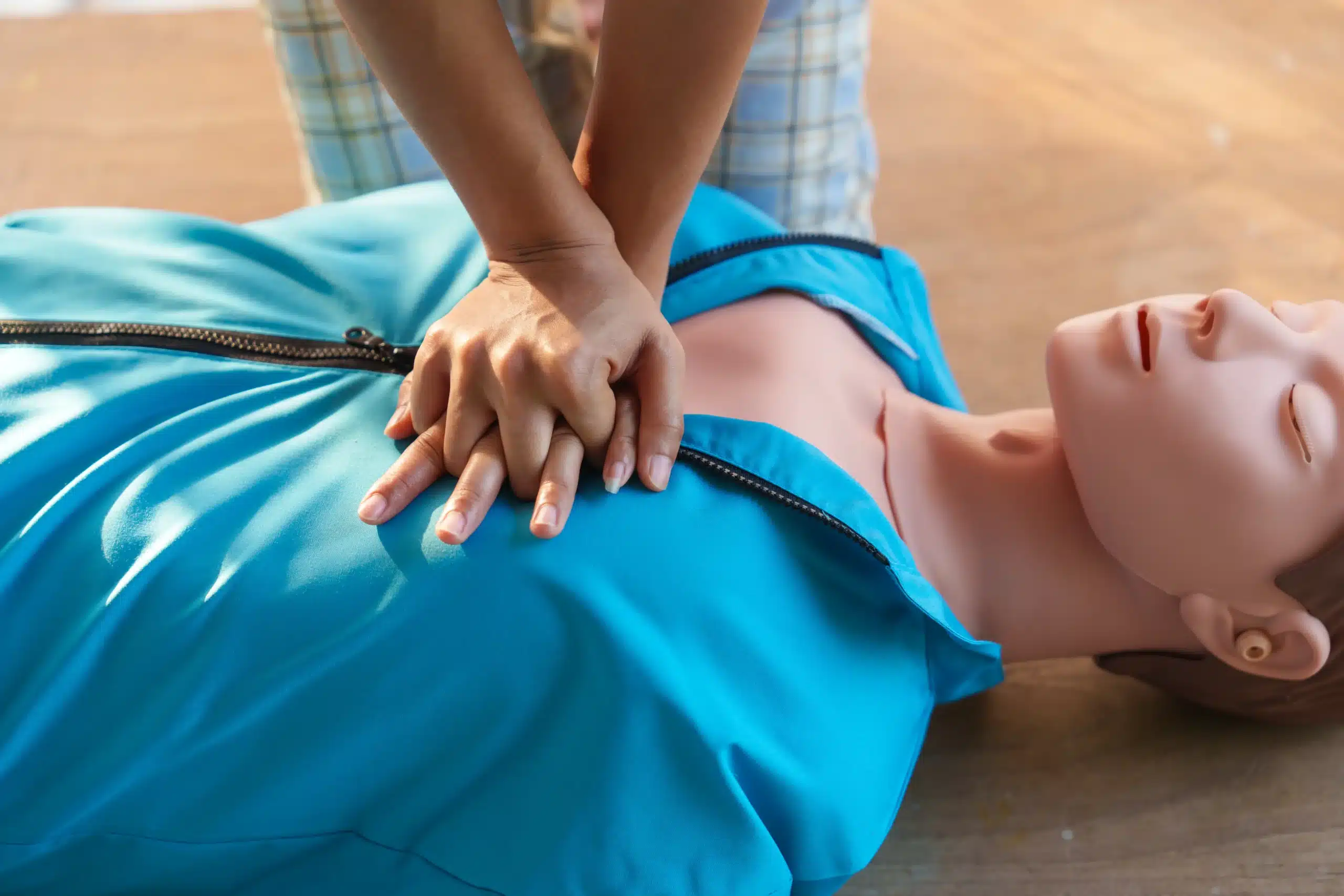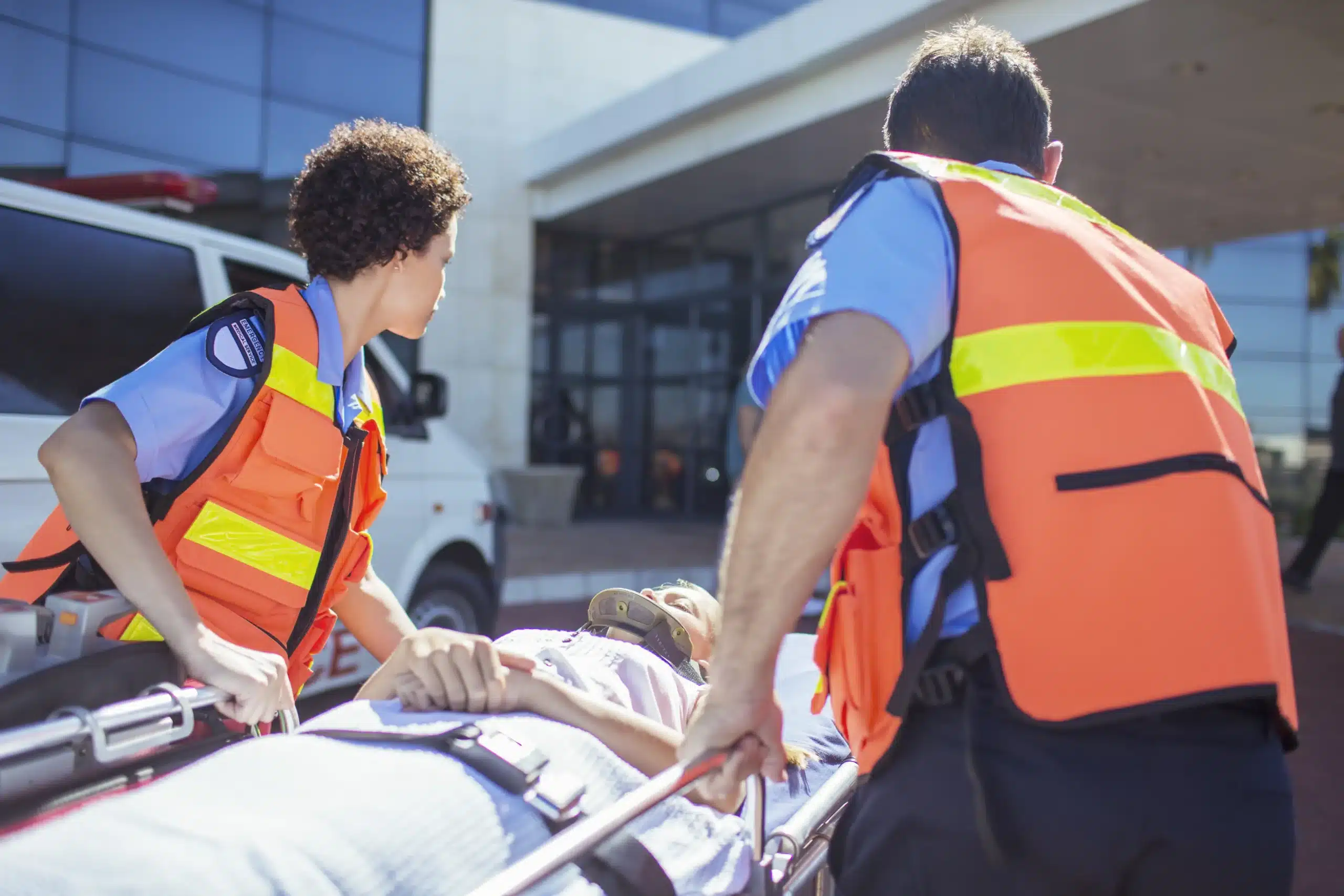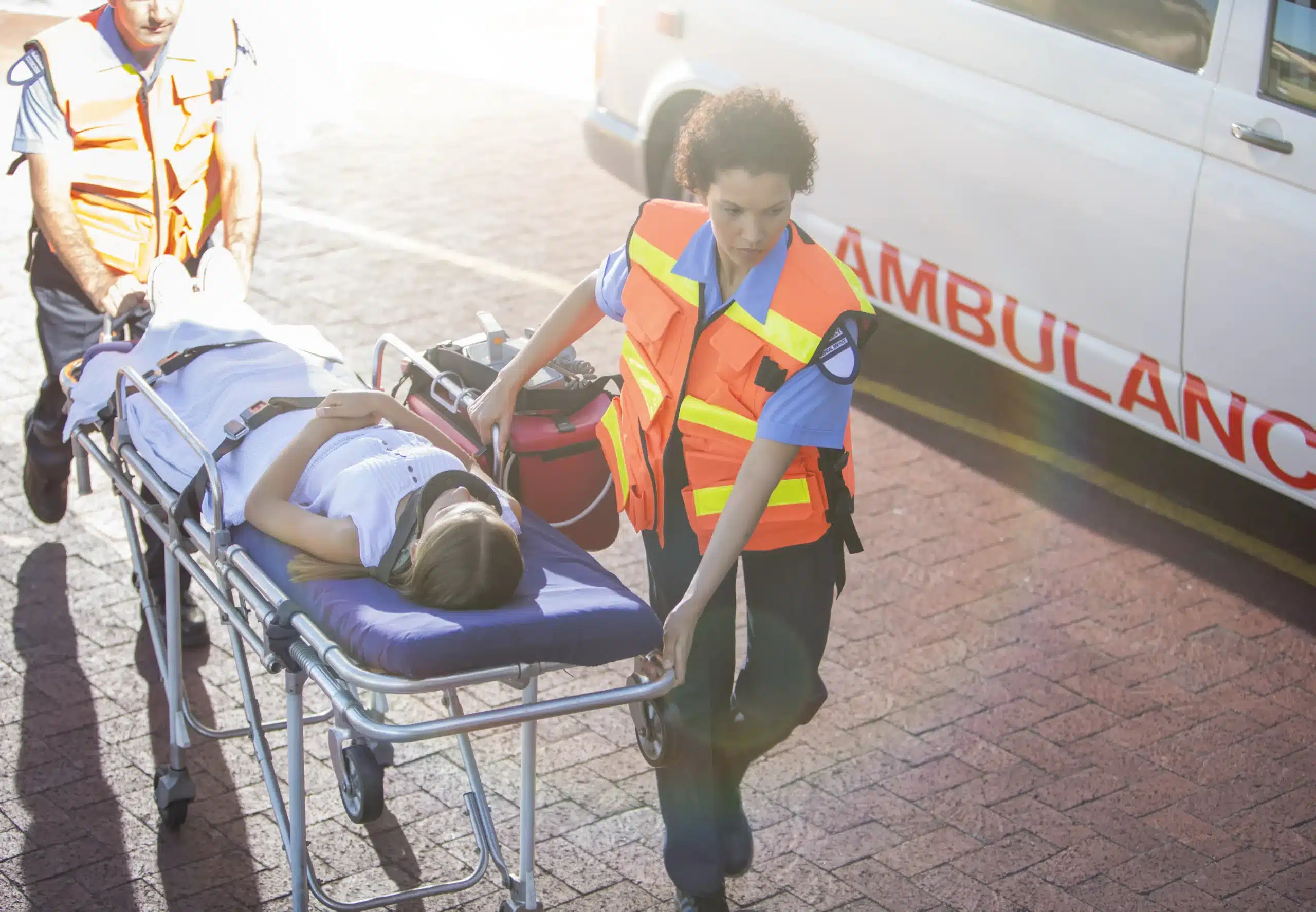Empowering yourself with life-saving skills is one of the most valuable things you can do, both for yourself and your community. BLS certification provides the knowledge and training to respond effectively in medical emergencies, potentially making a life-or-death difference. If you’re searching for “BLS classes near me,” this guide will help you find the right training program to fit your needs and budget. We’ll explore the different types of BLS classes available, discuss the certification process, and provide tips for choosing a reputable training provider. We’ll also delve into the importance of ongoing practice and skill maintenance after you’ve earned your certification.
Key Takeaways
- BLS skills save lives: Equipping yourself with BLS skills enables you to respond effectively during medical emergencies, significantly improving the chances of survival.
- Choose the right learning format: Select a BLS course format—in-person, online, or blended—that aligns with your learning style and schedule. Hands-on practice is crucial for mastering these essential skills.
- Stay current with BLS guidelines: Maintain your skills and knowledge by practicing regularly and renewing your certification every two years. Staying up-to-date ensures you can provide the most effective care in an emergency.
What are BLS Classes & Why are They Important?
Basic Life Support (BLS) classes teach you the skills to respond to life-threatening emergencies, especially cardiac arrest. These classes are crucial because they empower you to provide immediate care before professional help arrives, potentially saving a life. High-quality CPR greatly increases the chances of survival from cardiac arrest, making solid BLS skills essential for everyone—from healthcare professionals to everyday people. The quality of CPR provided in those first few critical minutes dramatically impacts outcomes. For a deeper understanding of training effectiveness, take a look at this research on feedback during BLS training00382-2/fulltext).
Key BLS Skills
BLS classes focus on core skills like performing high-quality chest compressions, delivering effective rescue breaths (ventilation), and using an automated external defibrillator (AED). You’ll learn to recognize the signs of cardiac arrest and how to administer CPR quickly and effectively. Proper technique is key, so BLS classes emphasize correct hand placement, compression depth, and rate. Studies show that using objective feedback tools, like specialized manikins, during training can significantly improve skill acquisition and retention.
Who Needs BLS Certification?
While BLS certification is often required for healthcare providers and medical professionals, it’s valuable for anyone. Parents, teachers, coaches, childcare providers—anyone who might witness a medical emergency—benefits from BLS training. These skills give you the confidence to step in and assist when every second counts. This research shows how immediate feedback during training improves skill acquisition for both medical students and the general public. At Safety Training Seminars, we offer BLS certification courses designed to meet the needs of everyone in our community.
BLS Class Types Near You
Choosing the right BLS class format depends on your learning style, schedule, and budget. Let’s explore the pros and cons of each type:
In-Person Classes
In-person BLS classes offer a hands-on learning experience with direct interaction with a certified instructor. This format allows for real-time feedback, which is essential for mastering CPR techniques and building confidence. Being in a classroom setting also allows you to practice with other students and ask questions as they arise. Studies, like this one in Resuscitation Journal00382-2/fulltext), show how valuable this direct feedback can be. If you thrive in a structured, interactive environment, in-person classes might be your best bet. Our BLS certification courses are a great option if you prefer this learning style.
Online Classes
Online BLS classes provide flexibility for those with busy schedules or limited access to in-person training. You can learn at your own pace and revisit materials as needed. However, online classes typically lack the hands-on practice component crucial for developing muscle memory and confidence in performing CPR. Research, like this study in Resuscitation Journal00716-7/fulltext), shows that acquiring and retaining BLS skills can be challenging without in-person practice. While online courses offer convenience, they may not fully prepare you for real-life emergencies. Consider supplementing online training with hands-on practice sessions.
Blended Learning
Blended learning combines online coursework with in-person skills sessions. This format allows you to learn the theoretical aspects of BLS online at your own pace, then practice your skills with an instructor. This approach is ideal for those who appreciate the flexibility of online learning but also recognize the value of hands-on training and instructor feedback. Research published in Taylor & Francis Online highlights how blended learning can significantly improve skill acquisition. If you’re looking for a balanced approach, blended learning could be the perfect fit. Check out our American Heart Association BLS course for a blended learning option.
Find Reputable BLS Training
Finding the right BLS training is crucial for your career and your confidence in saving lives. Here’s how to find a program that meets your needs:
Check AHA Accreditation
The American Heart Association (AHA) sets the gold standard for BLS certification. Many employers, including hospitals and clinics, require AHA-approved certifications to ensure their staff is trained to the highest standards. Safety Training Seminars is an AHA Training Center offering the most current and comprehensive training. Verify that any program you choose is AHA-accredited before you register. This ensures you’ll receive high-quality training that meets industry standards and covers the latest science-backed techniques.
Evaluate Instructors
Experienced, certified instructors bring a wealth of knowledge to the classroom. Look for instructors with real-world experience, especially if you’re pursuing BLS certification for a healthcare career. Experienced instructors can offer practical insights and answer your questions effectively, enriching your learning experience and preparing you for real-life scenarios.
Read Reviews
Before committing to a BLS course, take the time to read reviews from past students. Online reviews offer valuable perspectives on the quality of instruction, class organization, and overall student satisfaction. Focus on reviews that mention BLS certification and hands-on training. Student feedback provides insights into the course experience and helps you make an informed choice.
What Happens in a BLS Class?
BLS certification classes cover essential life-saving skills for medical professionals and anyone interested in responding to emergencies. Let’s break down what you can expect during a typical BLS course.
Class Structure & Duration
BLS classes blend theory and practical exercises. You’ll start by reviewing key concepts like high-quality CPR for adults, children, and infants, along with how to use an automated external defibrillator (AED). The class also covers the chain of survival, recognizing and responding to life-threatening emergencies like a heart attack or stroke, and relieving choking. Studies consistently highlight the importance of structured feedback00382-2/fulltext) during these sessions to improve skill acquisition and retention. Because studies show that retention00716-7/fulltext) of BLS skills can be challenging, this focus on feedback and effective training methods is crucial.
Most BLS classes last between four to six hours, depending on the provider and format.
Hands-On Practice
A significant portion of your BLS class involves hands-on practice. You’ll work with training manikins to simulate real-life scenarios, practicing CPR techniques, using AEDs, and performing other essential skills. This practical training is vital for building muscle memory and confidence. Research shows that objective feedback from manikins, especially with audio and visual prompts, significantly improves CPR performance, both immediately after training and weeks later.
Assessment & Certification
To earn your BLS certification, you’ll need to demonstrate competency in both written and practical exams. The written exam tests your understanding of the course material, while the practical exam evaluates your ability to perform the skills you’ve learned. While real-time feedback during training can improve skill acquisition, it’s important to remember that practical application is key. As highlighted by NUS Medicine, simulation education emphasizes the importance of learning practically based on a solid understanding of the knowledge. Upon successful completion of both exams, you’ll receive your BLS certification card, typically valid for two years.
BLS Class Costs
Getting BLS certified is an investment in your skills and ability to respond to emergencies. Let’s break down the typical costs associated with BLS classes so you can plan accordingly.
Average Price Range
BLS class costs can fluctuate depending on several factors. Location, the training provider, and the type of certification all play a role. Generally, BLS certification falls somewhere between $30 and $150 per person. For workplace CPR certification, you’re typically looking at $20 to $55. If you’re adding First Aid training to your CPR certification, expect the combined cost to be between $40 and $60. Healthcare provider CPR certification usually lands in the $20 to $60 range, sometimes with course materials adding another $20 to $30.
Discounts & Promotions
Many training centers offer discounts and promotions, so keep an eye out! Some places have group discounts if you’re signing up with coworkers or friends. You might also find seasonal promotions or first-time student discounts. It’s always worth asking about potential cost savings.
Safety Training Seminars’ Low Price Guarantee
At Safety Training Seminars, we believe that high-quality BLS training should be accessible to everyone. We’re committed to offering competitive prices in Sacramento County. In fact, we have a low price guarantee. If you find a comparable BLS certification course at a lower price, we’ll match or beat it. We want to make sure cost isn’t a barrier to gaining these life-saving skills.
Register for a BLS Class
Ready to gain confidence in your life-saving skills? Registering for a BLS class is straightforward. This section walks you through the process so you know what to expect.
Enrollment Steps
Finding a BLS class near you is easy. Many organizations, such as the American Heart Association, offer various courses. Check their websites for schedules and locations convenient for you. Safety Training Seminars offers BLS certification courses in Sacramento, Roseville, and Rocklin. Once you find a class that fits your schedule, you can typically register online. The process usually involves creating an account, selecting your course date, and making a payment.
Required Materials & Prerequisites
Most BLS courses don’t require previous certifications. A basic understanding of first aid is helpful but not mandatory. You’ll receive comprehensive training during the course. For materials, bring a pen and notepad to take notes. Some providers, like the Red Cross, incorporate real-life scenarios into their training, so having a place to record key takeaways can be beneficial.
Cancellation & Rescheduling
Life happens, and sometimes you need to reschedule. Before registering, review the training provider’s cancellation policy. Some providers, like CPR One Carolina, require 48 hours’ notice for cancellations or rescheduling. Others, such as the CPR, ACLS & PALS Training Institute, have a no-refund policy for no-shows. Understanding these policies upfront will save you potential headaches. Safety Training Seminars publishes its cancellation policy on its website, so you’re always informed.
Choose the Right BLS Class Format
Choosing the right BLS class format depends on your learning style, schedule, and specific needs. Let’s break down the pros and cons of different formats, along with options tailored for healthcare professionals and non-medical participants.
Format Pros & Cons
In-person classes offer hands-on practice and immediate feedback from instructors. This direct interaction can be invaluable for mastering crucial skills like chest compressions and rescue breaths. Studies show that real-time feedback, especially with tools like the SkillReporter manikin, significantly improves both skill acquisition and retention. However, in-person classes require a fixed schedule and travel time. Online BLS classes provide flexibility, allowing you to learn at your own pace and convenience. They often incorporate interactive elements and simulations, making the learning experience engaging. However, they may lack the immediate, personalized feedback of an in-person class. While convenient, online learning requires self-discipline and may feel isolating for some. Blended learning, combining online modules with in-person skills sessions, offers a balance between flexibility and hands-on training. This hybrid approach allows you to learn the cognitive material online and then practice your skills in a real-world setting with an instructor.
Options for Healthcare Professionals
For healthcare providers, high-quality BLS training is essential. Studies consistently highlight the importance of proper BLS skills and the challenges of skill retention among healthcare workers00716-7/fulltext), directly impacting patient outcomes. Given the demanding schedules of medical professionals, blended learning can be a highly effective option. It allows for convenient online learning combined with focused in-person skills practice and feedback using simulation tools00382-2/fulltext), leading to better skill retention. This format also facilitates consistent training across large healthcare teams. In-person training, while effective, can be difficult to schedule for busy healthcare professionals.
Options for Non-Medical Participants
Non-medical participants, such as teachers, coaches, or childcare providers, also benefit from BLS training. While in-person classes offer a structured learning environment, online or blended learning options can be more accessible. For some learners, the immediate feedback in a traditional classroom setting can feel overwhelming. Online modules allow them to review material at their own speed and build confidence before practicing skills in person. Blended learning offers a good compromise, ensuring a solid understanding of the material before the practical application. Ultimately, the best format depends on individual learning preferences and comfort levels. Consider what works best for your learning style and schedule when making your decision.
BLS Certification: Validity & Renewal
How Long is Certification Valid?
BLS certification, like most healthcare certifications, isn’t a one-and-done deal. They’re typically valid for two years. This timeframe is set to ensure healthcare providers and other certified individuals maintain their life-saving skills. Staying current with the latest guidelines and techniques is critical for effective emergency response. The American Heart Association emphasizes the importance of regular renewal to ensure competency.
Renew Your Certification
So, what happens when your BLS certification nears its expiration date? You’ll need to recertify! This process ensures you stay up-to-date with the latest BLS guidelines and best practices. You can usually recertify through the same organization that provided your initial training. Many providers, including Safety Training Seminars, offer recertification courses. It’s a good idea to check the specific requirements of your certifying organization, such as the American Red Cross, as they might have specific guidelines. Don’t wait until the last minute—plan and schedule your recertification in advance to avoid any lapse in your credentials.
Top Sacramento BLS Training Providers
Finding the right BLS training provider is crucial for a high-quality learning experience and a recognized certification. Here are some leading BLS training providers in the Sacramento area:
Safety Training Seminars
Safety Training Seminars is a woman-owned AHA Training Center offering a variety of courses, including BLS, ACLS, PALS, CPR, and First Aid. With classes offered daily in Sacramento, they make it easy for busy professionals to fit training into their schedules. They pride themselves on affordability, with a low price guarantee for Sacramento County. They serve Sacramento, Roseville, and Rocklin, CA. Learn more about their BLS course, ACLS training, or options that meet the EMSA Child Care Health & Safety requirements. They also offer RQI classes.
American Red Cross
The American Red Cross offers BLS training in Sacramento for individuals and organizations. Their blended learning approach combines online coursework with in-person skills sessions. This flexible format lets students learn the theory at their own pace and then practice skills in a hands-on setting.
American Heart Association
The American Heart Association (AHA) provides BLS, ACLS, and PALS courses through authorized training centers across Sacramento. AHA courses are known for their comprehensive curriculum and high standards, giving healthcare professionals the skills they need for medical emergencies. You can find AHA-certified BLS training through various local providers.
ProCPR
ProCPR is a popular online option for CPR and BLS certification. Their online format offers flexibility and convenience for self-paced learning. While they may not have a physical location in Sacramento, their online courses are accessible to anyone with an internet connection.
National CPR Foundation
The National CPR Foundation offers a variety of CPR and BLS training courses, both online and in-person. They focus on accessibility and affordability, making them a good option for those seeking budget-friendly training solutions in Sacramento.
Make the Most of BLS Training
Getting the most out of your BLS training involves more than just showing up. It requires preparation, active participation, and a commitment to maintaining your skills after you receive your certification card. Here’s how to maximize your BLS learning experience:
Prepare for Class
Before your BLS class, take some time to familiarize yourself with the course material. Review any pre-course work provided by your instructor. This preparation will give you a foundation for the concepts and skills you’ll be learning, allowing you to focus on mastering the techniques during class time. Knowing what to expect can also ease any pre-class jitters. Studies show that preparation for simulation-based BLS training can significantly improve the quality of CPR performed.
Participate Actively
During your BLS class, engage actively with the instructor and your fellow students. Ask questions, participate in discussions, and take advantage of every opportunity to practice your skills. Hands-on practice is crucial for developing muscle memory and confidence in performing CPR and other life-saving techniques. Research shows that receiving feedback during training, especially from a manikin, can significantly improve both skill acquisition and retention. Don’t be afraid to make mistakes—that’s how you learn!
Maintain Skills After Certification
Your BLS certification is valid for two years, but your skills can fade over time. To stay sharp and prepared for any emergency, regular practice is essential. Consider refreshing your knowledge and skills periodically by reviewing the course materials, practicing with a friend or family member, or attending a refresher course. Studies have shown that regular practice and feedback are key to maintaining high-quality CPR performance. Staying up-to-date on the latest BLS guidelines can also help you provide the most effective care in a real-life emergency. Remember, your ability to perform BLS effectively could one day save a life.
Related Articles
- OSHA-Approved BLS Certification: A Comprehensive Guide – Sacramento CPR Classes
- BLS Classes in Sacramento: Your Complete Guide – Sacramento CPR Classes
- BLS Courses in Sacramento: Your Complete Guide – Sacramento CPR Classes
- HeartCode BLS Sacramento: Your Certification Guide – Sacramento CPR Classes
- BLS Certification Sacramento: A Guide for Healthcare Providers – Sacramento CPR Classes
Frequently Asked Questions
Why is BLS certification important? BLS certification equips you with the skills to respond effectively to medical emergencies like cardiac arrest. It emphasizes high-quality CPR, which significantly improves survival rates. These skills are valuable for both healthcare professionals and anyone who wants to be prepared to help in a crisis.
What does a BLS class cover? BLS classes teach essential life-saving techniques, including CPR for adults, children, and infants, how to use an AED, and how to recognize and respond to various medical emergencies. The curriculum combines theoretical knowledge with hands-on practice using training manikins.
How much does a BLS class cost? The cost of a BLS class varies depending on location, provider, and class format. Prices typically range from $30 to $150. Look for providers offering discounts, promotions, or low-price guarantees to make training more affordable. Safety Training Seminars offers a low price guarantee for classes in Sacramento County.
How long is BLS certification valid, and how do I renew it? BLS certification is generally valid for two years. To renew your certification, you’ll need to take a recertification course. This ensures your skills and knowledge are up-to-date with the latest guidelines. Contact your original certifying organization or another approved provider to find a recertification course.
What are the different BLS class formats, and which one is right for me? BLS classes are offered in various formats: in-person, online, and blended learning (a combination of online and in-person). In-person classes provide direct interaction with instructors and hands-on practice. Online classes offer flexibility for those with busy schedules. Blended learning combines the convenience of online learning with the benefits of in-person skills sessions. The best format depends on your learning style, schedule, and preferences.


